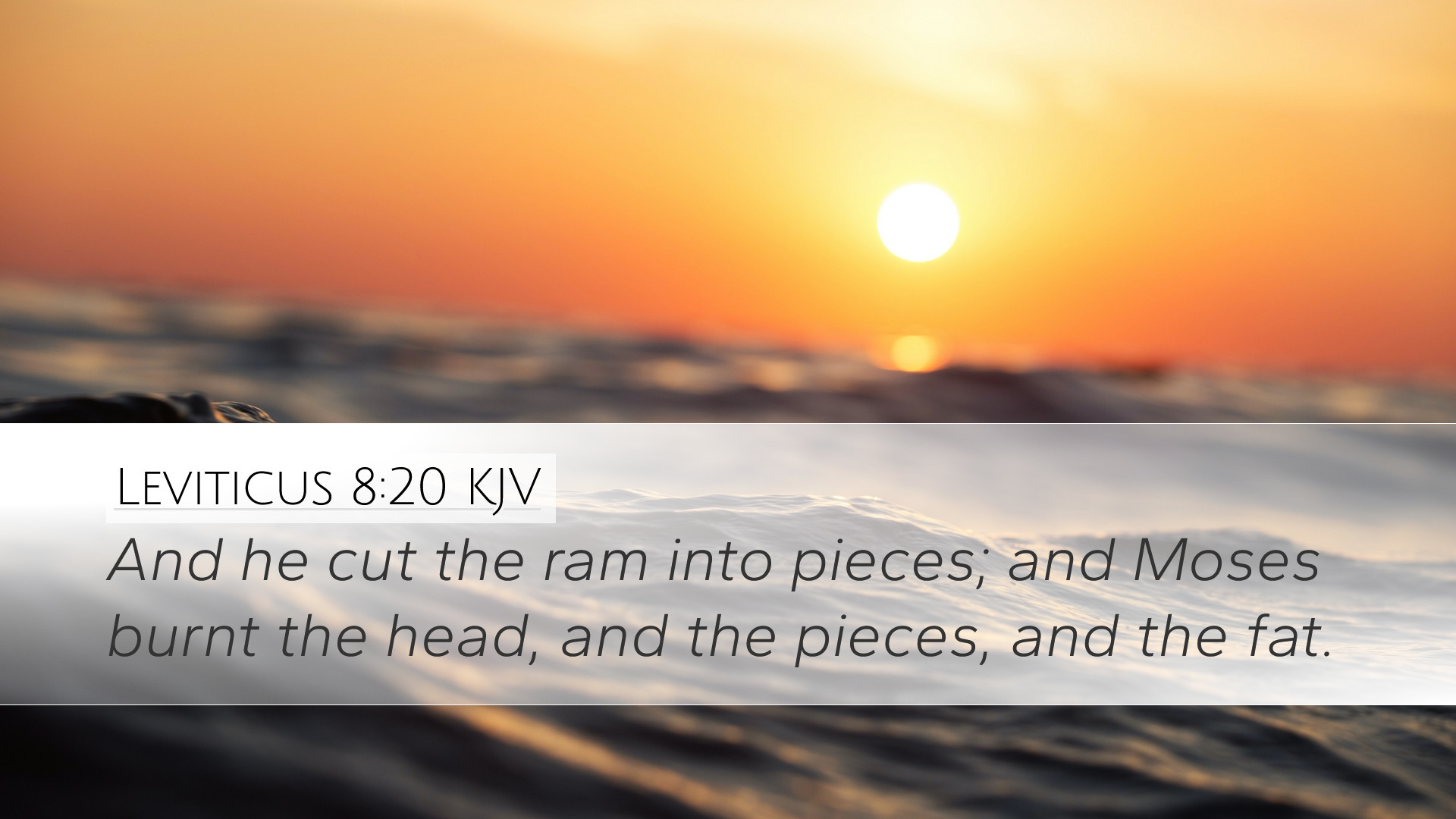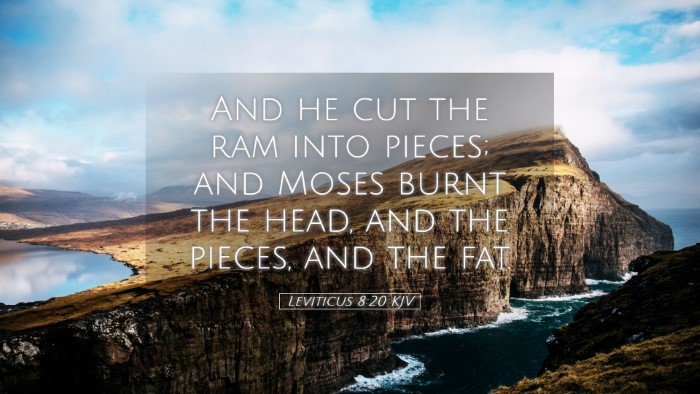Commentary on Leviticus 8:20
Leviticus 8:20 states: "And he cut the ram into its pieces; and Moses burnt the head, and the pieces, and the fat."
This verse reflects a critical moment in the consecration of Aaron and his sons as priests. The ceremonial acts carried out by Moses symbolize the transfer of authority and the establishment of a holy office among the people of Israel.
Contextual Overview
To grasp the full implications of this verse, one must consider the broader context of Leviticus 8. This chapter unveils the essential elements of the priestly ordination ceremony, where the priesthood is inaugurated through rituals that include anointing, offerings, and sacrifices.
Moses’ Priestly Role
Moses acts not only as a leader but as a mediator between God and the Israelites. The act of cutting the ram into pieces is a significant ceremonial ritual that underscores the seriousness of the sacrificial system established by God.
-
Matthew Henry's Perspective:
Henry emphasizes the symbolic nature of the sacrificial acts, detailing how the cutting of the ram signifies the complete dedication of the offering to God. It serves to highlight the importance of holiness and obedience in approaching God.
-
Albert Barnes' Commentary:
Barnes notes that the ram is a substitutionary sacrifice, indicative of the atonement that is necessary for the priesthood. The act of burning the head, pieces, and fat represents a total offering, with the consuming fire symbolizing God's acceptance of the sacrifice.
-
Adam Clarke's Insights:
Clarke addresses the significance of the different parts of the ram being burned. He points out that the head, representing the thoughts and intentions, the fat, symbolizing the richest parts of the offering, and the pieces are all inclusive aspects of what it means to give one's all to God.
The Significance of Sacrifice
The sacrificial system established in Leviticus serves as a profound precursor to the ultimate sacrifice of Christ. Each element of the sacrificial rites can be viewed as pointing toward the coming of the Messiah, who would embody the ultimate fulfillment of the sacrifices required for the atonement of sin.
Typology of the Ram
The ram itself holds typological significance. Various commentaries explore the ram as a symbol of Christ, both in His role as the Lamb of God and in the sense of His sacrificial death, which fulfills and surpasses the Old Testament sacrificial system.
-
Typological Representation:
The ram can be seen as representing strength and the willingness to sacrifice. Just as Aaron and his sons were anointed and consecrated to serve as intermediaries for the people, Christ intercedes for us, securing our relationship with God through His own sacrifice.
Application for Today
This passage carries profound implications for contemporary believers, pastors, and theologians. The act of sacrifice in the life of a believer transcends the ancient practices of the Israelite community.
-
Flaming Devotion:
Just as the fire consumed the offerings, believers are called to offer their lives wholly to God. The principles of sacrifice and dedication serve as a reminder of the call to holiness in our daily living.
-
Intercessory Role:
The ministry of the priesthood extends to all believers. Each individual is called to intercede for others, reflecting the essence of Christ's high priestly role.
-
Understanding Atonement:
The significance of atonement through sacrifice invites deeper reflection on the cost of grace and the love that God demonstrated through Christ. This encourages believers to pursue a life that honors that sacrifice.
Conclusion
In conclusion, Leviticus 8:20 encapsulates a rich tapestry of theological insights that spans from the Old Testament sacrificial system to the New Testament fulfillment in Christ. It emphasizes the seriousness of holiness, the significance of offering oneself to God wholly, and the overarching narrative of redemption. Understanding these dimensions fosters a deeper appreciation for the ancient texts and their continued relevance in today’s spiritual journey.


